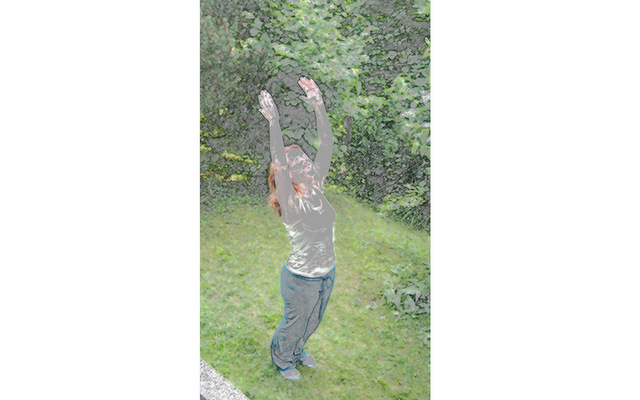Protecting Your Daughter Against Cervical Cancer
“Isn’t she lovely? Isn’t she wonderful? Isn’t she precious?”
Stevie Wonder, Songs in the Key of Life, 1976
What is the cervix?
We hear the words “cervix” and “cervical” a lot, but what do they actually mean? Like many medical words, they have their origins from Latin – in this case, the Latin word cervicis, meaning the neck of the body, or of any organ.
The cervix is the neck of a woman’s womb, or uterus, and it extends down slightly into the top of the vagina. It allows blood to flow out from the womb when a woman has her period and sperm to travel inside during sex; and the cervix opens up very wide during labour to allow a baby to be born.
Cervical is just the term used for anything of, relating to, or affecting the cervix. So, cervical cancer is cancer affecting the cervix.
Some facts and figures
Throughout the world, cervical cancer is the second most common cancer affecting women, behind breast cancer. In Switzerland, around 320 women are diagnosed with cervical cancer every year and 100 women die from the disease.
There is a pre-cancerous stage to cervical cancer – early, abnormal changes present in the cells of the cervix that could develop into cervical cancer in the future if they are not detected and treated. This is what doctors are looking for when a woman has her cervical screening test, usually called a “smear test” or “pap smear” (named after Georgios Nikolaou Papanikolaou, the Greek pathologist who invented it).
Each year in Switzerland, more than 5000 women are found to have pre-cancerous changes at cervical screenings and require further investigations. Sometimes they need laser treatment or surgery to remove the abnormal cells.
What causes cervical cancer?
Pre-cancerous and cancerous changes in the cells of the cervix are usually caused by previous infection with a virus called the human papilloma virus – HPV for short.
Although we hear a lot about HPV being connected with cervical cancer, there are actually over 100 different types of HPV that can infect many different parts of the body, not just the cervix. The part of the body affected depends on which type of HPV is causing the infection – they all have numbers. For example, many HPV types cause skin warts, others verrucae on the feet, and HPV types 6 and 11 cause around 95% of genital warts.
There are two particular types of HPV linked to cervical cancer: HPV type 16 and HPV type 18. Infection with these types is passed on through sex with an infected person, and men and women can both be infected. A woman will have no outward symptoms or signs of infection, but the virus can persist for months or years in the cells of her cervix. In one woman out of every four or five infected, the persistent infection can cause pre-cancerous or cancerous changes in the cells. HPV types 16 and 18 are responsible for 70% of cervical cancers. Because the woman has no outward symptoms, she will not know that she is infected, but she can still pass on the virus to others.
HPV is the most common sexually-transmitted infection in Switzerland and throughout the rest of the world. Around 70% of sexually active men and women are infected with HPV at some point in their lives. The risk of infection is highest for young women between the ages of 16 and 25. The younger a person becomes sexually active and the more sexual partners they have, the greater their chance of becoming infected.
“A daughter may outgrow your lap but she will never outgrow your heart.”
Author unknown
The HPV vaccine
The good news is that since 2008 in Switzerland, an HPV vaccination campaign has been in place. The vaccination protects against infection with HPV types 16 and 18, and so protects against 70% of cervical cancers.
There are two different vaccines available. The Gardasil® vaccine also protects against HPV types 6 and 11, which cause genital warts, but the Cervarix® vaccine does not offer this additional protection.
There are generally very few side effects after vaccination. There may be some reddening of the skin and soreness around the injection site. Some people experience headaches, tiredness or fever but these problems tend to resolve within a few days. It is not possible for the vaccine itself to transmit HPV infection or to lead to cervical cancer.
However, these are relatively new vaccines and at the moment the chances of other, extremely rare, side effects cannot be completely excluded. However, even if extremely rare side effects are discovered, this risk should be weighed against the much higher risk of developing pre-cancerous changes or even cervical cancer if a young woman is not vaccinated.
Who should have the vaccine?
Vaccination against HPV is most effective if it is given before a woman becomes sexually active. Studies show that in Switzerland, 5% of young women become sexually active before the age of 15 and around half of 16 year olds are sexually active. For this reason, vaccination against HPV is recommended for all girls between the ages of 11 and 14. A “catch-up” vaccination programme is also currently in place for young women between the ages of 15 and 19 who didn’t receive the vaccine when they were younger.
But women up to the age of 26 may be vaccinated, and this includes women who are already sexually active. Even if a woman has already been infected with one type of HPV, the vaccine can still protect against the other types covered by the vaccine, and it may also protect against re-infection. However, the usefulness of vaccination becomes less the greater the risk that a woman has already been infected with HPV – for example, in women who have had multiple sexual partners. For this reason, in women aged 20 or over, the decision about whether to vaccinate is usually made on an individual basis after discussion with their doctor.
Girls between 11 and 14 need two doses of the vaccine over a period of 6 months. If the vaccine is given to young women of 15 or older, three doses are needed.
What about the boys?
At present, routine HPV vaccination in boys is not being carried out in Switzerland. HPV infection does increase the risk of some cancers in men including penile and anal cancer but these cancers are rare and HPV is not the only cause. Because HPV can be passed on through sexual contact, vaccinating girls should mean that the numbers of young men becoming infected with HPV will also be reduced.
How can I arrange vaccination?
Each canton in Switzerland is responsible for organising its own HPV vaccination programme, and the vaccine is offered by the school health doctors and nurses in many Swiss state schools. In Swiss international schools, speak to the school nurse, or if there is no school nurse, your doctor or paediatrician. In that way, you can find out more about how the vaccination programme works in your area.
The cost of vaccination for girls and young women between the ages of 11 and 26 is covered by basic health insurance, provided that it is carried out as part of the cantonal vaccination programme.
Is cervical screening still needed?
The HPV vaccine does not protect against all types of HPV that can cause cervical cancer. This means that women still need regular check-ups and cervical screening. Cervical cancer develops very slowly. Regular screening can help detect any pre-cancerous or early cancerous changes so that prompt treatment can be given with the aim of preventing progression of the disease.
Do condoms protect against HPV infection?
Unfortunately, wearing a condom does not offer full protection against HPV infection because the virus can also be carried on the skin and genital area not covered by the condom. However, it is still important to practice safe sex to help reduce the risk of transmitting other sexually transmitted infections including chlamydia and HIV.
By Dr Michelle Wright MBChB, MRCGP
Dr Michelle Wright is a British-trained general practitioner. She works as a doctor in the staff medical service of the International Labour Organisation in Geneva and she has a regular radio show about health on World Radio Switzerland. Dr Michelle is also one of the medical directors of HealthFirst, a company delivering first-aid training and health education in English throughout Switzerland.
Contact info@healthfirst.ch if you are interested in attending or organising a first-aid course near you.
Illustration by Albina Nogueira
Albina began to work as primary school teacher in 1992, first in Portugal and later in Luxembourg. For the past seven years she has been developing her artistic side: writing, drawing and producing small books. Find her on Facebook under the name Albina Silva, and visit her blog at http://albinanogueira.blogspot.ch/




